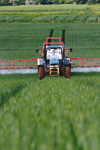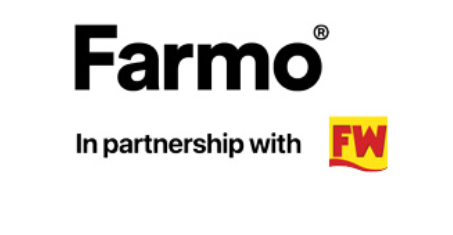Strobilurin fungicides star in HGCA fungicide trials

Extremely strong efficacy against both wheat rust diseases from strobilurin fungicides was a key finding in last season’s HGCA appropriate fungicide dose trials.
All three leading strobilurins – pyraclostrobin, azoxystrobin and fluoxastrobin (as in Fandango) – were very active against yellow rust in the Terrington trials, while both pyraclostrobin and Fandango markedly increased green leaf area compared with triazole fungicides alone in the predominantly brown rust trial at Biggleswade, said Jonathan Blake of ADAS.
Yields were similarly increased by adding a strobilurin at the latter trial. There was around a 1t/ha jump from adding in the fluoxastrobin to prothioconazole in Fandango compared with Proline alone (prothioconazole), and a similar jump from adding Comet 200 (pyraclostrobin) to 0.5 litres/ha of Opus (epoxiconazole). The latter treatment gave the highest yield in the trial, Mr Blake said.
Proline proved to be relatively weaker against both brown rust, and perhaps, more surprisingly, yellow rust than epoxiconazole or Folicur (tebuconazole), although Prosaro, a mix of prothioconazole and tebuconazole, performed as well as those triazole standards.
The trials, where only one application of a product was made at GS33, were designed to break products, and did show Proline “perhaps doesn’t have the extent of rust activity as some of the other triazoles,” Mr Blake acknowledged. “However, in programmes it performs very well.”
TAG’s Stuart Knight suggested growers rarely would use Proline alone, and while the data suggested the product might be weaker on rusts, if the active was used in the correct way, for example by mixing with a strobilurin or tebuconazole, there would be nothing to worry about.
Mr Barr said he wouldn’t pick Proline on a rust-susceptible, septoria-resistant variety, but wouldn’t have a problem using on a septoria-susceptible, moderately resistant to rust one. “But you might need to add in a strobilurin at T1 if rust is floating about.”
Proline remained however, along with epoxiconazole, as the strongest product against septoria, Mr Blake said. It was difficult to split the products on either eradicant or protectant activity. Tebuconazole, in contrast to its rust activity, was not performing particularly well.
Bravo had relatively little eradicant activity against the disease – less the prochloraz – but was a strong protectant.
Strobilurins added relatively little to triazole performance against septoria, although Comet 200 did appear to have a little eradicant activity, Mr Blake reported. In two trials strobilurins added around 0.5t/ha in yield, in two others they gave virtually no yield increase. “It’s an inconsistent effect, but if it does occur it appears you don’t need much more than 0.25-0.5t/ha.”
Tracker in one trial had given “unexplainably” poor eradicant performance, but appeared to boost the septoria protection over epoxiconazole slightly, he said. “It also gives an improvement in yield.”
Proline was the strongest azole fungicide against powdery mildew, while Flexity, Talius and Cyflamid were all strong specific mildewicides.

